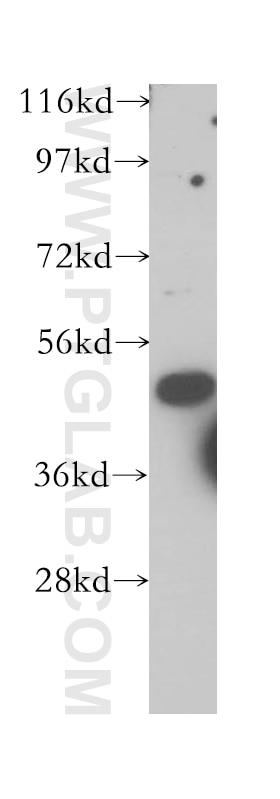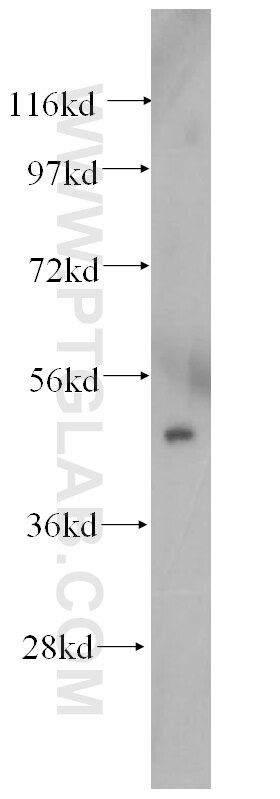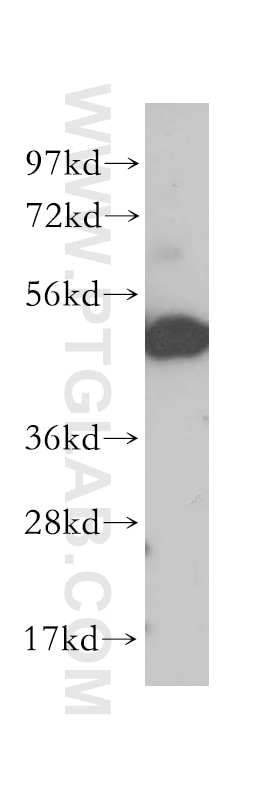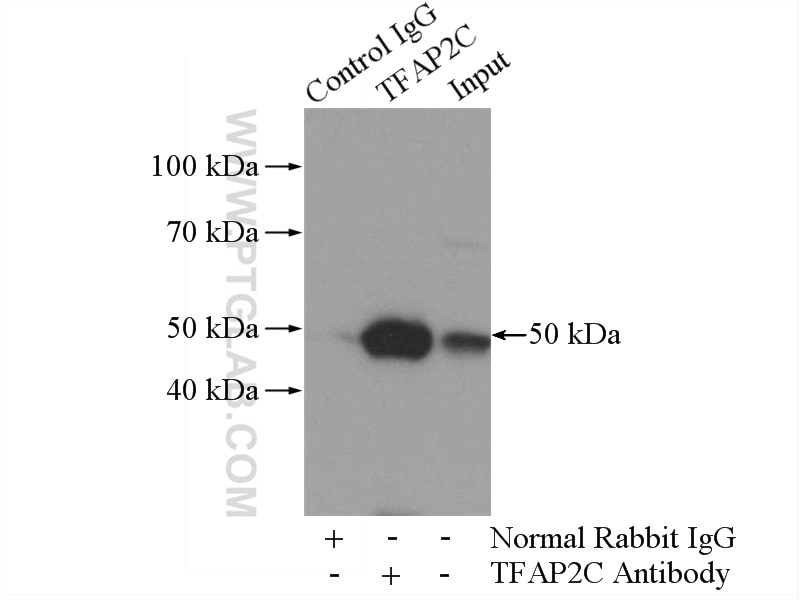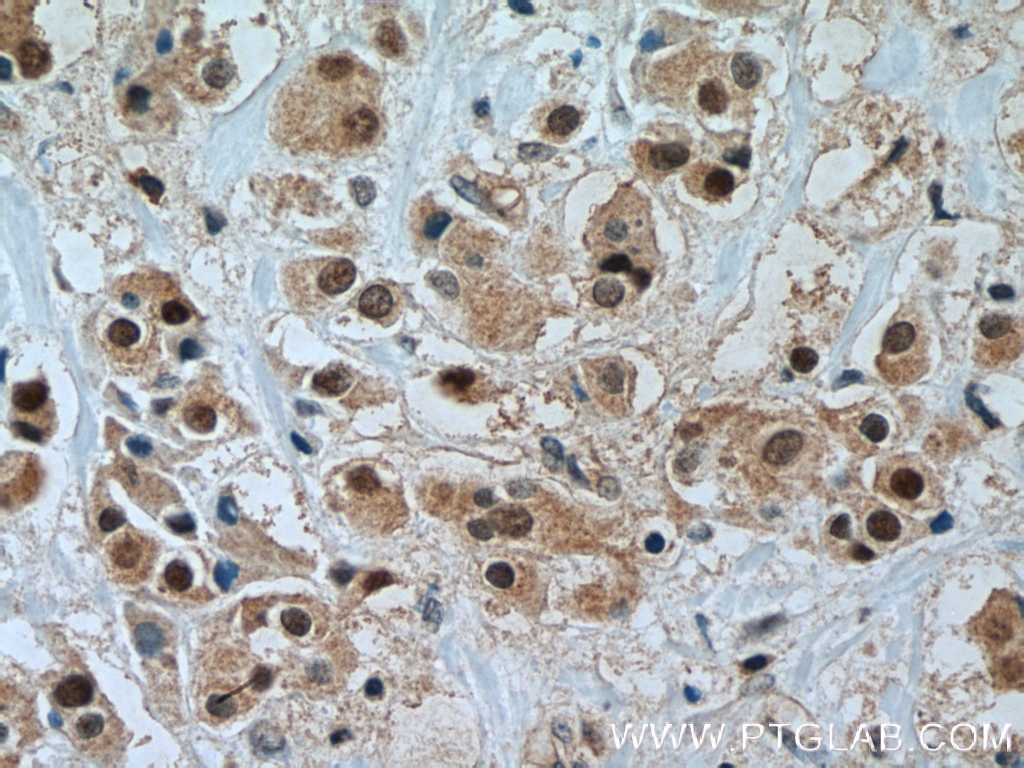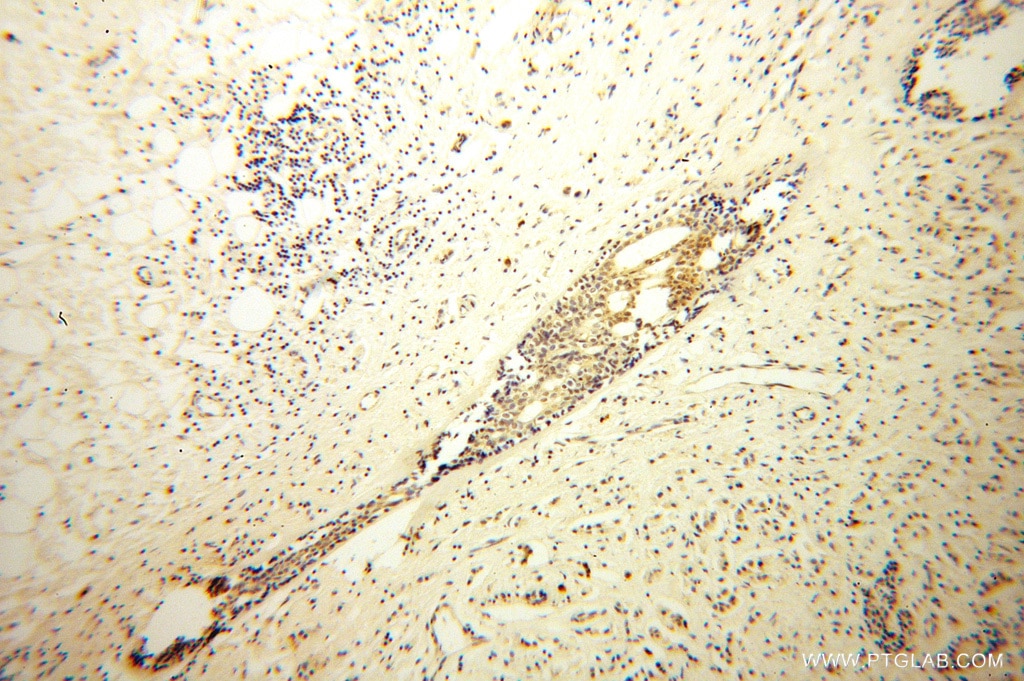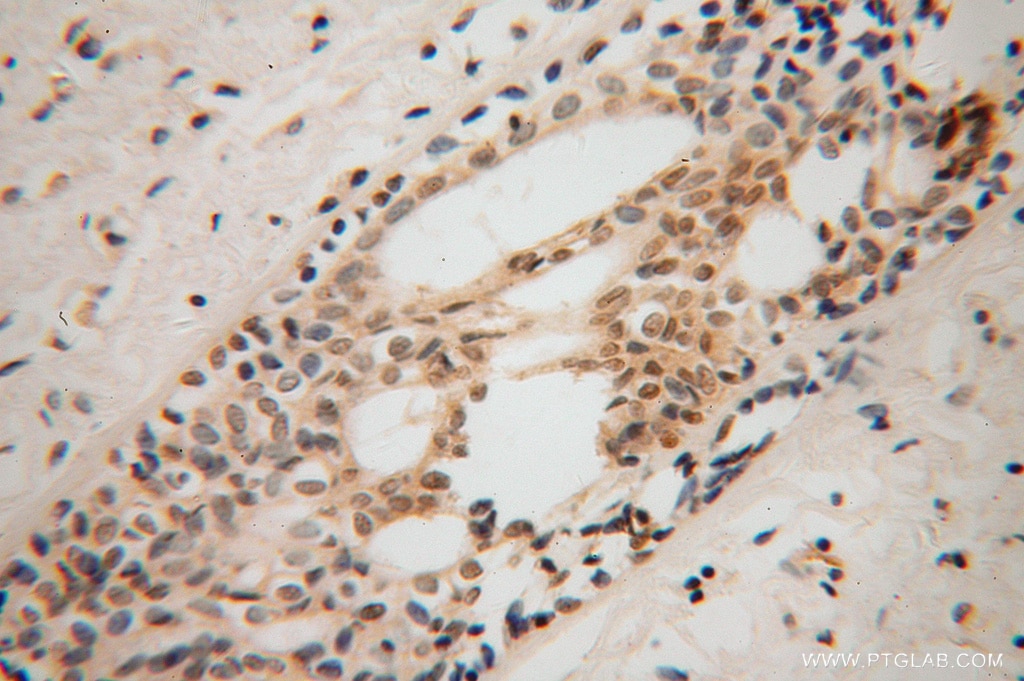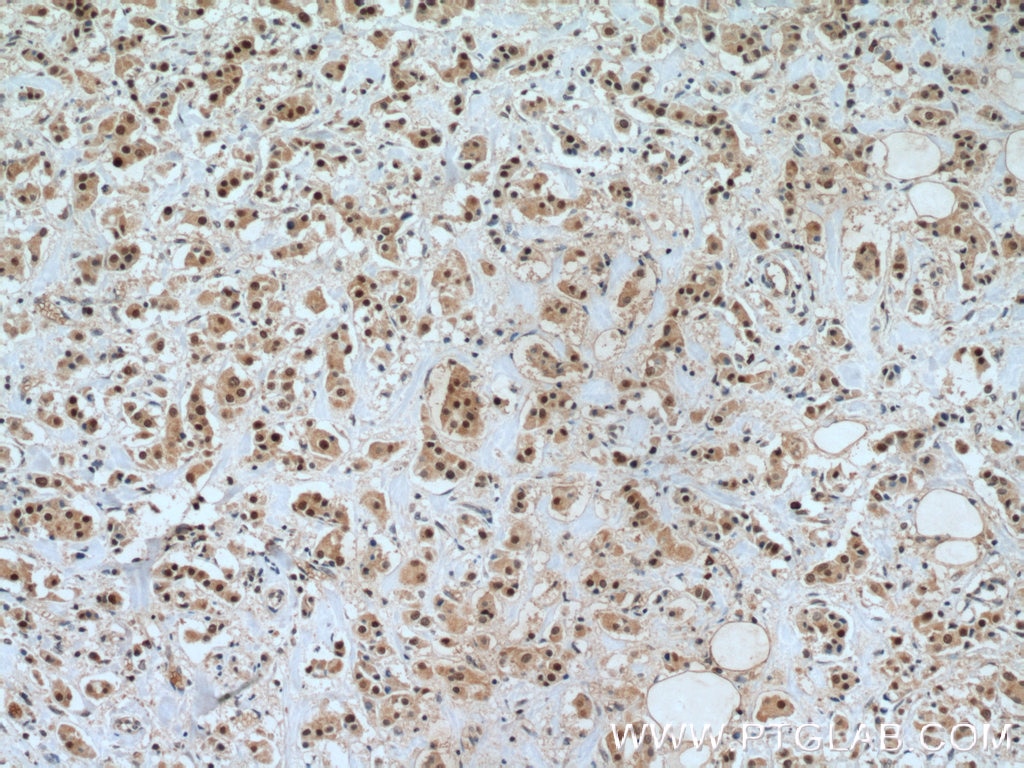- Phare
- Validé par KD/KO
Anticorps Polyclonal de lapin anti-TFAP2C/AP2 gamma
TFAP2C/AP2 gamma Polyclonal Antibody for WB, IHC, IP, ELISA
Hôte / Isotype
Lapin / IgG
Réactivité testée
Humain
Applications
WB, IHC, IP, chIP, ELISA
Conjugaison
Non conjugué
N° de cat : 14572-1-AP
Synonymes
Galerie de données de validation
Applications testées
| Résultats positifs en WB | cellules HeLa, cellules MCF-7, tissu placentaire humain |
| Résultats positifs en IP | cellules HeLa |
| Résultats positifs en IHC | tissu de cancer du sein humain il est suggéré de démasquer l'antigène avec un tampon de TE buffer pH 9.0; (*) À défaut, 'le démasquage de l'antigène peut être 'effectué avec un tampon citrate pH 6,0. |
Dilution recommandée
| Application | Dilution |
|---|---|
| Western Blot (WB) | WB : 1:500-1:2400 |
| Immunoprécipitation (IP) | IP : 0.5-4.0 ug for 1.0-3.0 mg of total protein lysate |
| Immunohistochimie (IHC) | IHC : 1:50-1:500 |
| It is recommended that this reagent should be titrated in each testing system to obtain optimal results. | |
| Sample-dependent, check data in validation data gallery | |
Applications publiées
| KD/KO | See 3 publications below |
| WB | See 10 publications below |
| IHC | See 5 publications below |
| ChIP | See 4 publications below |
Informations sur le produit
14572-1-AP cible TFAP2C/AP2 gamma dans les applications de WB, IHC, IP, chIP, ELISA et montre une réactivité avec des échantillons Humain
| Réactivité | Humain |
| Réactivité citée | Humain |
| Hôte / Isotype | Lapin / IgG |
| Clonalité | Polyclonal |
| Type | Anticorps |
| Immunogène | TFAP2C/AP2 gamma Protéine recombinante Ag5648 |
| Nom complet | transcription factor AP-2 gamma (activating enhancer binding protein 2 gamma) |
| Masse moléculaire calculée | 49 kDa |
| Poids moléculaire observé | 50 kDa |
| Numéro d’acquisition GenBank | BC035664 |
| Symbole du gène | TFAP2C |
| Identification du gène (NCBI) | 7022 |
| Conjugaison | Non conjugué |
| Forme | Liquide |
| Méthode de purification | Purification par affinité contre l'antigène |
| Tampon de stockage | PBS with 0.02% sodium azide and 50% glycerol |
| Conditions de stockage | Stocker à -20°C. Stable pendant un an après l'expédition. L'aliquotage n'est pas nécessaire pour le stockage à -20oC Les 20ul contiennent 0,1% de BSA. |
Informations générales
TFAP2C (Transcription Factor AP-2 Gamma) is a member of the AP-2 transcription factor family, which plays a crucial role in early embryonic development, specifically in regulating the development of trophoblast cells and maintaining pluripotency. TFAP2C is known to regulate transcription by opening enhancers and is associated with a set of enhancers present in human embryos. It also functions as a regulator of both inner cell mass and trophectoderm differentiation, and controls the expression of cell-polarity genes. This protein binds to specific DNA sequences to activate or repress target genes, making it a key player in cellular processes and a potential therapeutic target in oncology research.
Protocole
| Product Specific Protocols | |
|---|---|
| WB protocol for TFAP2C/AP2 gamma antibody 14572-1-AP | Download protocol |
| IHC protocol for TFAP2C/AP2 gamma antibody 14572-1-AP | Download protocol |
| IP protocol for TFAP2C/AP2 gamma antibody 14572-1-AP | Download protocol |
| Standard Protocols | |
|---|---|
| Click here to view our Standard Protocols |
Publications
| Species | Application | Title |
|---|---|---|
Mol Cancer CircIL4R activates the PI3K/AKT signaling pathway via the miR-761/TRIM29/PHLPP1 axis and promotes proliferation and metastasis in colorectal cancer.
| ||
Cell Rep CRISPR screening identifies regulators of enhancer-mediated androgen receptor transcription in advanced prostate cancer
| ||
Oncogene Abrogation of glutathione peroxidase-1 drives EMT and chemoresistance in pancreatic cancer by activating ROS-mediated Akt/GSK3β/Snail signaling. | ||
Genes Immun LncRNA sequencing reveals an essential role for the lncRNA-mediated ceRNA network in penile squamous cell carcinoma | ||
Front Oncol TFAP2C-Mediated lncRNA PCAT1 Inhibits Ferroptosis in Docetaxel-Resistant Prostate Cancer Through c-Myc/miR-25-3p/SLC7A11 Signaling. |
